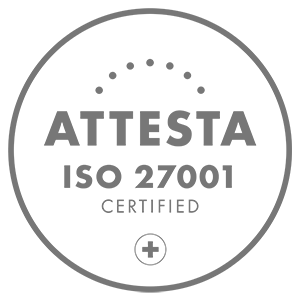See the threats your SIEM and EDR miss—with AI-powered NDR from Exeon
Our AI-powered NDR and UEBA platform delivers deep visibility, detects advanced cyber threats in real time, and enables rapid mitigation. With seamless integration, interoperability, and advanced detection models, we strengthen security operations and ensure resilience.


















Powerful AI
Exeon’s advanced detection techniques are based on years of experience in the red-teaming field, as well as a decade of academic research. Our algorithms rely on behavioral analytics and do not require deep packet inspection.
Future-proof
Thanks to its metadata analysis, Exeon remains completely unaffected by the rapid increase in traffic encryption. The platform scales with multiple distributed appliances, managed from a central dashboard, without the need for agents or sensors.
100% data confidentiality
We make data protection our #1 priority. You remain in full control of your sensitive data as Exeon runs on-prem, in your private cloud or in a public cloud tenant.
Comprehensive visibility
Gain full visibility into your entire network, enabling early identification of vulnerabilities, threats, and unusual activities, reducing the risk of undetected breaches.
The most advanced security analytics technology
Excellence on purpose
Our advanced security platform has been awarded and recognized worldwide for its innovative and future-proof capabilities.




Real-world success stories
Here’s how we provide our unique AI-powered technology to support security teams and managed security service providers in safeguarding corporate and personal data, operations, and reputation.

CISO, SWISS International Airlines
“As the Swiss national airline, we are driven by a passion for exceptional performance, in the spirit of our guiding principles. A stable and secure IT is the most important basis for an excellent customer service. For the security of SWISS IT, we use Exeon as a central cybersecurity tool, fully managed by our long-term partner Reist Telecom AG. A perfect combination and solution to monitor our network and quickly detect any kind of anomalies.”

Head IT Security, PostFinance AG
“PostFinance has chosen Exeon.NDR because of its open and future-proof architecture. Not needing any hardware sensors and being able to control data flows, we didn’t have to make any significant changes to our existing infrastructure. We are also convinced by the cooperation with the competent and technically outstanding Exeon team.”

CEO & Founder, Planzer
“As CEO and owner of a fast moving, international logistics company, I cannot afford any system interruptions due to cyber incidents. With Exeon.NDR, we have found a Swiss solution to monitor our network and quickly detect cyber threats.”

ICT Project Leader, WinGD
“Exeon provides us with complete visibility of our network data flows and automatically detects suspicious behavior. Thanks to their AI algorithms, we immediately identify potential cyber threats and can respond quickly and efficiently. This way, we prevent attackers from moving undetected in our systems, infiltrating the infrastructure, or bypassing existing security measures.”

Director of Cybersecurity Research, KuppingerCole
“The management and analyst interfaces are intuitive and can yield important insights for customers. Exeon’s approach to data retention helps customers keep data local for regulatory compliance and reduces costs for long-term storage by only retaining event metadata. The solution supports the most pertinent standards for exchanging threat information.”

Network & Security Engineer, Solothurner Spitäler
“Exeon is our cybersecurity alarm system, alerting us to any network anomalies. What also really convinced us is the platform’s intuitive interface—it has become a tool to reliably monitor and secure our data and network.”
How it works
An overview of the Exeon customer journey to elevated cybersecurity.
01Get in touch
View Exeon.NDR threat detection videos or schedule a demo to speak with our network security experts to explore Exeon's security analytics platform. Meet with us to solidify an implementation plan for our solution, where we transparently discuss pricing, deployment, and timelines to match your requirements with our capabilities.
02Straightforward installation
Deploy Exeon as a virtual machine in minutes and connect to your existing data sources without installing agents or changing your network topology. Instantly gain complete, real-time visibility into all traffic flows and anomalies across your IT and OT environments without impacting ongoing operations.
03Eye-opening analysis
By making all devices and communications on the network visible, Exeon enables you to understand what is really happening on your network. Eliminate blind spots, discover legacy assets/protocols, reduce false positives and focus on the threats that matter.
04Immediate & ongoing protection
Our supervised algorithms protect you from all known and unknown threats and scenarios from day one. After a few days, the unsupervised algorithms quickly learn your system—just a short period of automated learning is enough to recognize corporate patterns, and their efficiency continues to grow. Once the unsupervised algorithms are fully trained, Exeon further improves its detection by uncovering anomalies and unusual behaviors that would otherwise go unnoticed.
Experience Exeon.NDR
Committed to data sovereignty and confidentiality, we ensure top compliance, empowering security teams to navigate any challenge with confidence. Are you ready?
Market comparison
Exeon eliminates the need for deep packet inspection (DPI) with metadata driven analysis, providing continuous visibility across on prem, virtual, and cloud networks — completely non invasive, without agents and without hardware appliances.
Capabilities
Lightweight, efficient data analysis without traffic mirroring or sensors
Security analytics unaffected by encryption
Superior network visibility, not restricted to core switch traffic only
Powerful Machine Learning algorithms
Fully on-prem data processing
Exeon
Vectra
Darktrace
ExtraHop
Some of the many industries Exeon thrives in

Finance
From regulatory requirements to on-prem and air-gapped deployment and 100% data privacy.
Manufacturing & industrial
Sensorless detection across IT/IIoT converged environments — including legacy OT devices — ensuring continuous monitoring with zero downtime operations.
Logistics & transportation
Secure and compliant logistics & transportation operations with seamless global deployment for highly distributed networks.
Public sector
Empowering government organizations with the protection of highly sensitive data, using metadata insights for robust oversight, flexibility and privacy compliance.
Healthcare
Sensorless protection, deployed flexibly on prem or in the cloud, upholds patient data privacy without DPI for compliance and precise threat detection across even non agentable medical devices.
Some of the many industries Exeon thrives in
Exeon in action
Learn how our next-gen analytics empower teams with precision, speed, and efficiency.

Guided threat detection tour

NIS2, DORA & KRITIS Guide

DORA Compliance Checklist

NIS2 Manufacturing Use Case

AI against advanced threats

Public Sector Use Case
Insights from our security experts
Cut through the cyber noise: blogs written by our thought leaders in AI-powered cybersecurity.
Book a short, hassle-free demo.
Schedule a demo today and discover how advanced network security meets seamless compliance and Swiss excellence.





















































